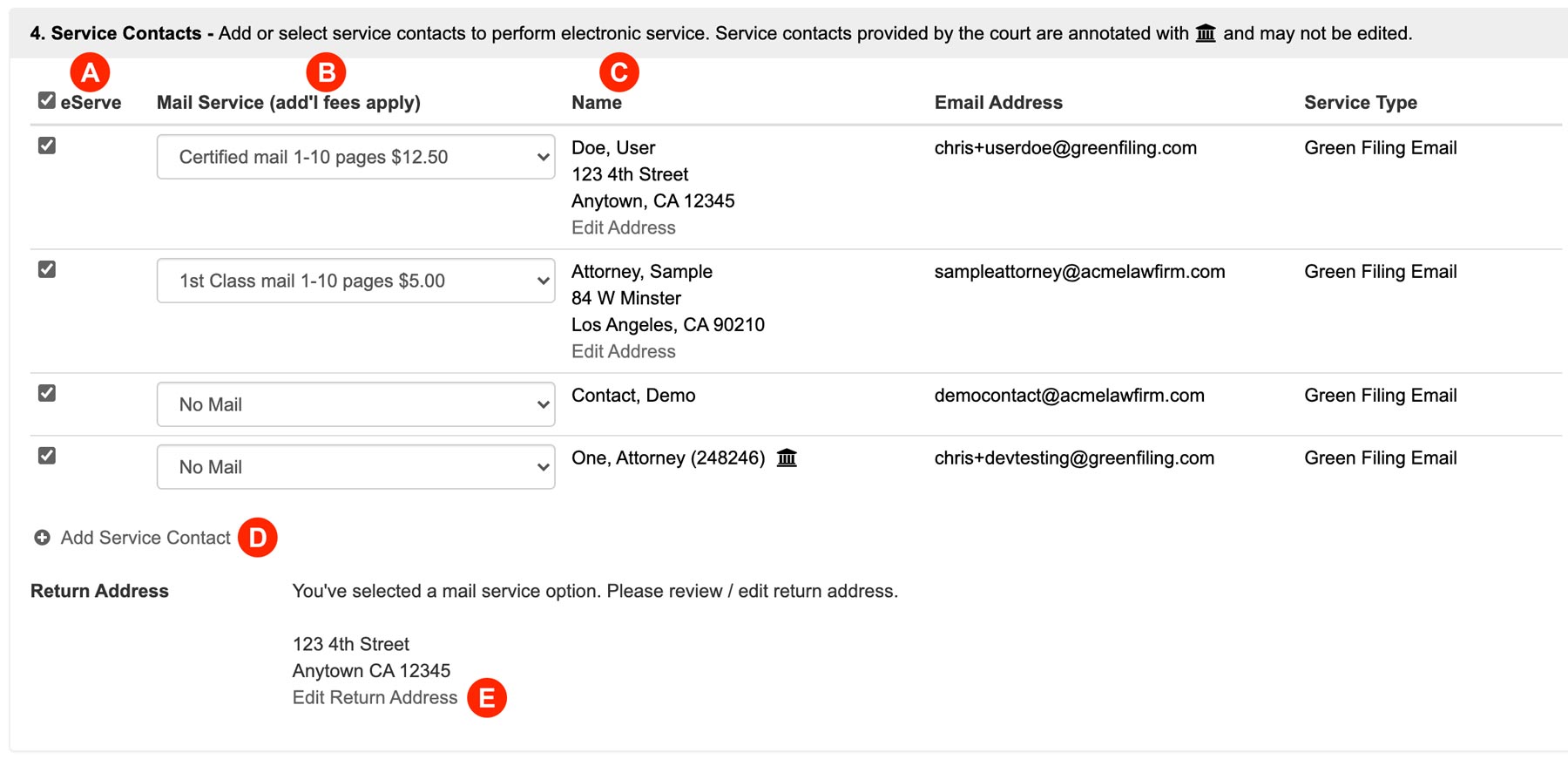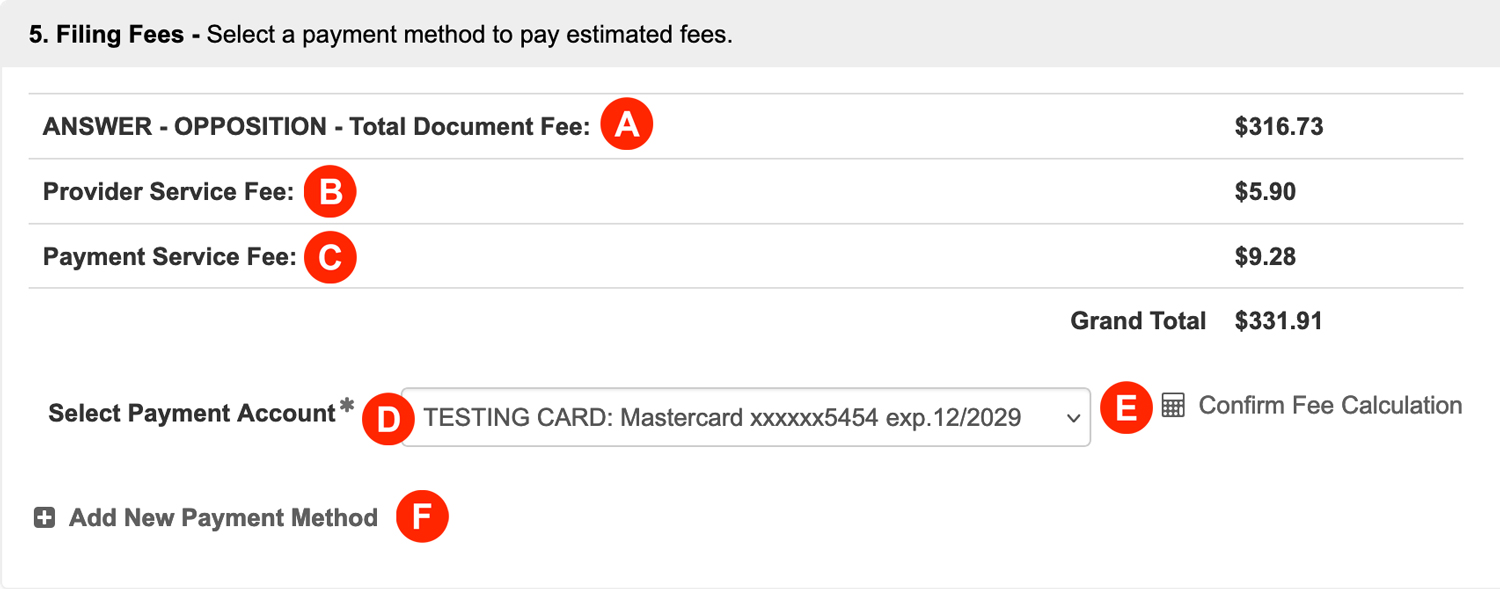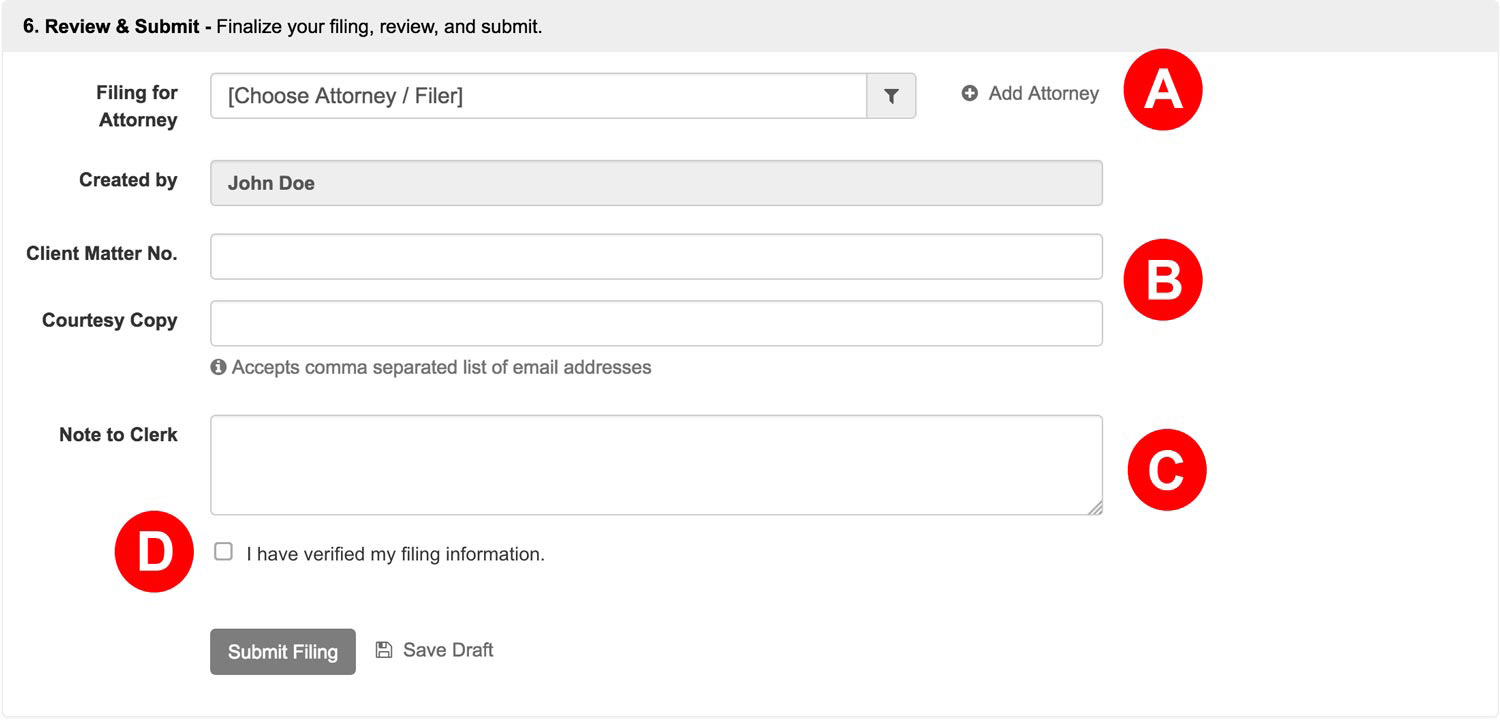These instructions are to File on an Existing Case in the California Appellate Court—meaning this case already exists in the Appellate Court system. If one does not exist yet, you will want to Initiate a New Case in the Appellate Court system.
File on an Existing Case
From the Dashboard, click File on an Existing Case
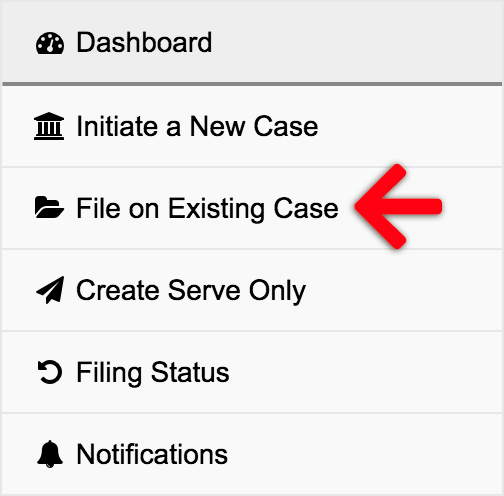
1. Select Court & Case Type – Choose your case, or click add a case to retrieve your case from the court’s system.

If you do not see your case in the drop down, you may type some or all of the case number to filter your results. If you have not yet added the case to your account, you may click the Add a Case link to the right of the Case field.
Learn how to add a case to your account
2. Add Documents – Define, select, and upload the documents that make up your filing.
- Document Type – The Court prescribes the list of documents available in the Document Type field. If you don’t see the specific document type you are looking for, then you will select the document type that most closely matches, or is somewhat generic in nature. Learn more
- Document Description – You have the option to enter the document title in the document description field.
- Click to Upload – Click the link to add your document. Aside from the Bulk Party List, our system will automatically convert most native file formats (i.e. Word, WordPerfect, JPG, PNG, GIF, TIF) into the Court’s preferred Adobe PDF format, upon upload.
- Edit – Click the Edit button to edit a description, delete a document, or replace a document.
3. New Case Parties – Enter the required parties.
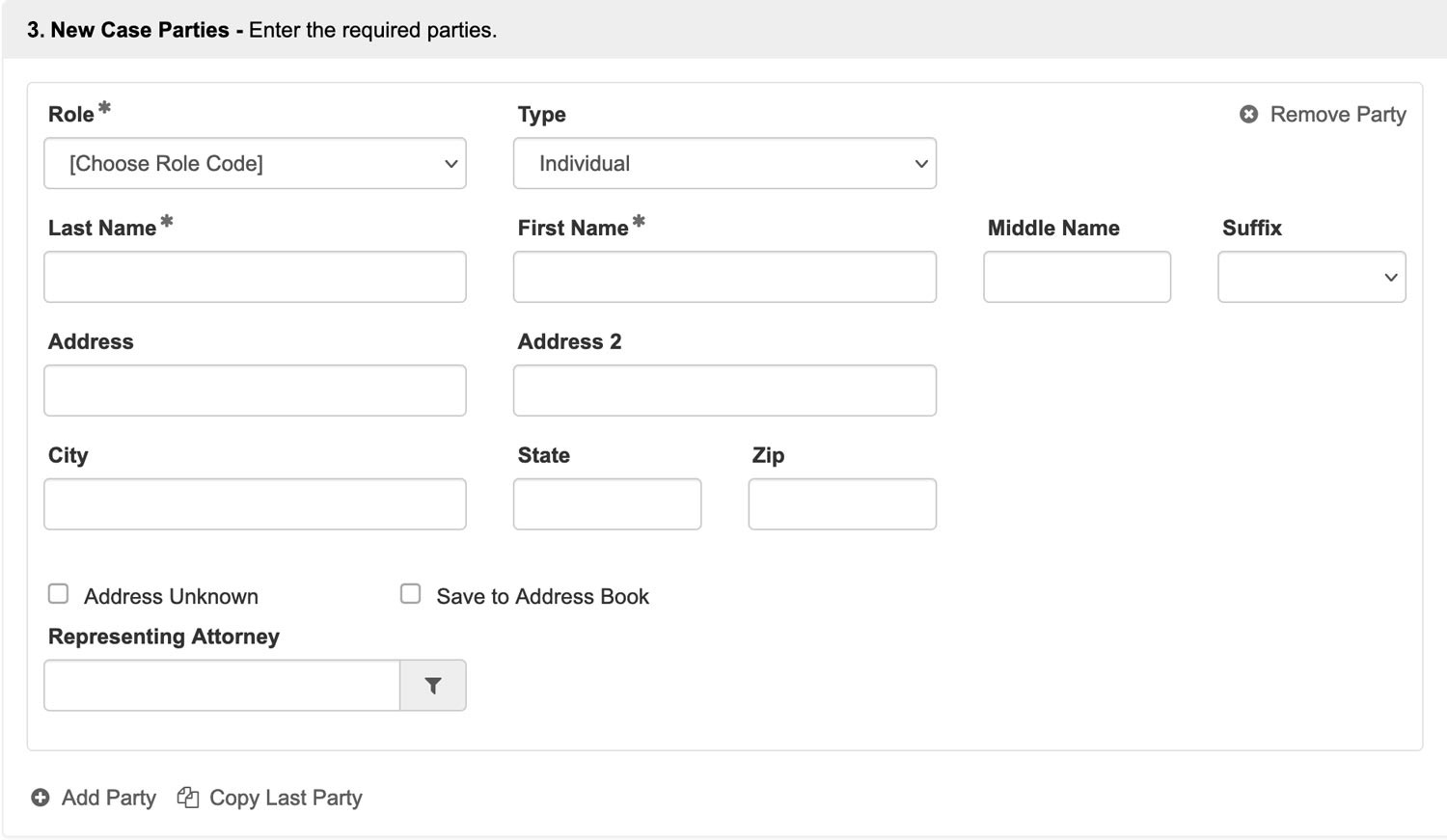
If you need to add a new case party, then select and enter the new party’s information in the subsequent fields.
4. Service Contacts – Add or select service contacts to perform electronic service. Service contacts provided by the court are annotated with and may not be edited.
- eServe – Select (or deselect) any one listed to receive e-service. If no contacts are listed (or if a filer wishes to add additional service contacts), click the Add Service Contact link (Letter D). A filer may only edit or delete service contacts they originally added. Any service contacts annotated with is a contact directly from the court and may not be edited or deleted.
IF YOU DO NOT WANT THE OPPOSING PARTY (OR ANY PARTY) TO HAVE ACCESS TO A CONFIDENTIAL DOCUMENT NEVER E-SERVE THEM. E-SERVING A PARTY MEANS THAT YOU, THE FILER, CONSENTS TO THEM HAVING ACCESS TO THE DOCUMENT. - Mail Service – Certified and First Class Mail – Starting in the fall of 2021, filers may choose to send the accepted documents to contacts via Certified and First Class Mail.
- Name – In this column, a filer may add or edit an address for Mail Service. However, only the contact’s name will show unless the filer selects a Mail Service type in the previous column.
- Add Service Contact – As always, filers may click the Add Service Contact link to add new contacts to a filing.
- Return Address – Filers will want to make sure the Return Address listed is correct for any returned Mail Service.
Learn More about Service Contacts and our new Mail Service via Certified and First Class Mail
5. Filing Fees – Select a payment method to pay estimated fees.
Fees Breakdown
A. Court Document Fees – If any of your Document Types have fees associated with them, the first row(s) will list the document with its associated fees. If this amount looks incorrect, filers will want to choose a different document type above.
B. Provider Service Fee – This is the fee your chosen provider (EFSP) charges for each accepted filing. Please refer to your EFSP for more information regarding their fees.
C. County Court Transaction Fee – The County Court may charge a transaction fee for your case initiation.
D. EFM Convenience Fee – The California Appellate Court’s E-Filing Manager software provider may charges filers for each accepted filing. This is the software the courts use to receive, review, and process filings that each e-filing service provider is integrated with.
Payment Service Fee – The Payment Processor currently charges 3% the total fees for using a credit card or $1 for using an ACH payment type for each accepted filing.
Confirm Fees
E. Select Payment Account – Choose your payment type. Filers who select an ACH payment type will also need to select a credit card on file as backup. If you do not see your payment type, click the Add New Payment Method link below (Letter H).
F. Confirm Fee Calculation – Click the Confirm Fee Calculation link to see the estimated fees. The filing fees auto-populate from the court based on the Document Type(s) selected and the Additional Information entered. If the fees seem incorrect, you may need to change one of these types above.
G. Add New Payment Method – If you do not see your payment type in Letter F or wish to add a new one, click this link to add it.
6. Review & Submit – Finalize your filing, review, and submit.
- If you are Filing for an Attorney select them from the menu or click the Add Attorney link.
- If your firm uses any sort of Client Matter No, enter it here. If you want an unofficial copy of the filing to go to anyone associated with the case, like a client, enter their email(s) here. Note: this is different from a service contact, and it, along with the client matter number, are for your internal purposes only.
- If your court has the option to leave the clerk a memo, enter any sort of note here in the Note to Clerk box.
- Review your entire filing for accuracy, Then check the box to acknowledge you have verified your filing information.
ONCE THE FILING IS SUBMITTED, NEITHER THE FILER NOR THE E-FILING VENDOR MAY CANCEL OR EDIT THE SUBMISSION.
Submit Your Filing
Click the Submit Filing button. Clicking this button, sends your filing directly to filing clerk’s queue at the Court for review. Once all documents are successfully sent to them, the Court will return an envelope number with the date and time they received the full submission. This will be the date and time for the file stamp in your accepted filing. Any filing the Court receives weekdays after 11:59PM, on the weekend, or Court Holiday receives an accepted file stamp of the next Court business day.
On the Filing Status Screen, you will now see your filing is listed as pending. You may return to this screen at any time to see the current status for it and any other filing. Depending on the Court, it can take as little as a minute to review the submission to a few hours to a full business day. If it takes longer than that, the Court may have a backlog they are working through. If you are ever concerned about the status of a submission, the best thing to do is contact the Court directly and provide them with the Envelope Number on your filing.
8. Pre-authorization of Fees
It is important to note that when you submit your filing, the court does a pre-authorization on your card for the filing fees. If the court rejects the filing, then they will not settle that pre-authorization, and it will eventually fall off your card within 3 to 10 business days from the date of the clerk’s rejection depending on your banking institution.
Learn more about the pre-authorization of fees

